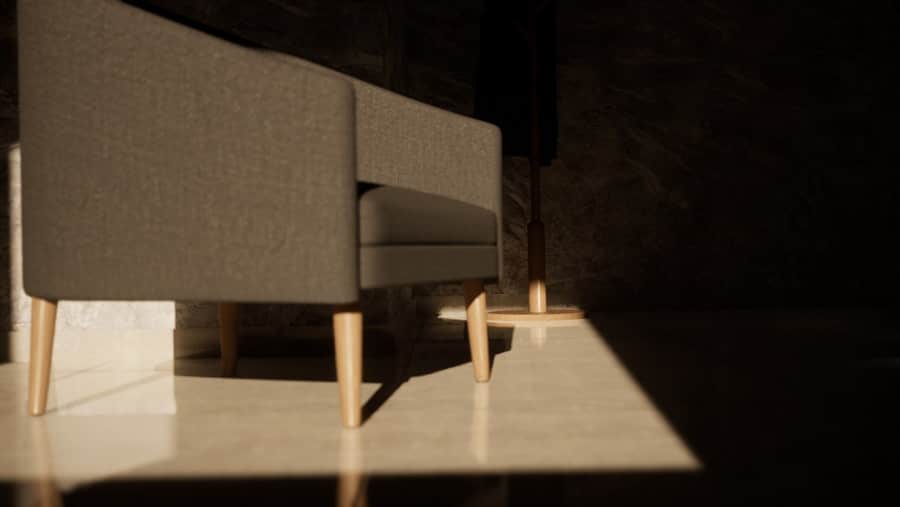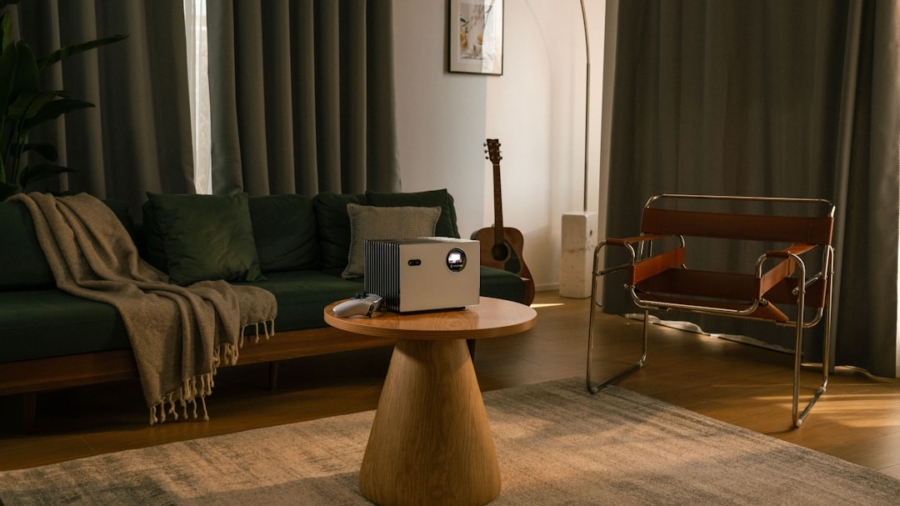The Internet of Things (IoT) has revolutionized various sectors, and the furniture industry is no exception. IoT-enabled furniture refers to pieces that are equipped with smart technology, allowing them to connect to the internet and communicate with other devices. This integration transforms traditional furniture into interactive, responsive elements of a living space.
As homes evolve into smart environments, the role of furniture is shifting from mere functionality to becoming an integral part of a connected ecosystem. The emergence of IoT-enabled furniture signifies a paradigm shift in how we interact with our living spaces, enhancing convenience, comfort, and efficiency. The concept of IoT-enabled furniture encompasses a wide range of products, from smart beds that monitor sleep patterns to coffee tables that can charge devices wirelessly.
These innovations are not just about adding technology for the sake of it; they are designed to improve the quality of life for users. By leveraging data and connectivity, IoT-enabled furniture can adapt to individual preferences and needs, creating a more personalized living experience. As consumers increasingly seek out smart solutions for their homes, the demand for such innovative furniture is expected to grow, paving the way for a new era in interior design and functionality.
Key Takeaways
- IoT-enabled furniture integrates technology into everyday household items, allowing for greater convenience and functionality in living spaces.
- The benefits of IoT-enabled furniture in living spaces include increased comfort, energy efficiency, and convenience through automation and remote control.
- Smart features and functions of IoT-enabled furniture include built-in sensors, connectivity to mobile devices, and the ability to adjust settings based on user preferences.
- Integration of IoT-enabled furniture with smart home systems allows for seamless control and coordination of various devices and appliances within the home.
- Customization and personalization of IoT-enabled furniture cater to individual preferences and lifestyle needs, enhancing the overall living experience.
Benefits of IoT-Enabled Furniture in Living Spaces
One of the most significant benefits of IoT-enabled furniture is its ability to enhance comfort and convenience in everyday life. For instance, smart sofas can be equipped with built-in sensors that adjust the seating position based on the user’s posture or preferences. This feature not only promotes better ergonomics but also ensures that users can enjoy their leisure time without discomfort.
Additionally, IoT-enabled beds can track sleep quality and provide insights into sleep patterns, allowing individuals to make informed decisions about their health and well-being. Another advantage lies in energy efficiency and sustainability. Many IoT-enabled furniture pieces come with features that help monitor and reduce energy consumption.
For example, smart lighting integrated into furniture can automatically adjust brightness based on the time of day or occupancy, thereby conserving energy.
This dual focus on comfort and sustainability positions IoT-enabled furniture as a forward-thinking choice for modern living spaces.
Smart Features and Functions of IoT-Enabled Furniture

The smart features embedded in IoT-enabled furniture are diverse and cater to various aspects of daily life. One prominent example is the integration of voice control capabilities. Many smart furniture pieces can be connected to virtual assistants like Amazon Alexa or Google Assistant, allowing users to control lighting, temperature, or even entertainment systems through simple voice commands.
This hands-free operation enhances user experience, particularly for those with mobility challenges or busy lifestyles. Moreover, IoT-enabled furniture often includes connectivity options that allow for seamless integration with smartphones and tablets. For instance, a smart desk may come equipped with wireless charging pads and USB ports, enabling users to keep their devices powered without cluttering their workspace with cables.
Additionally, some smart tables can sync with calendars or reminders, displaying notifications directly on their surface. These functionalities not only streamline daily tasks but also create a more organized and efficient living environment.
Integration of IoT-Enabled Furniture with Smart Home Systems
The true potential of IoT-enabled furniture is realized when it is integrated into broader smart home systems. This interconnectedness allows for a cohesive user experience where various devices work in harmony. For example, a smart bed can communicate with a smart thermostat to adjust room temperature based on the user’s sleep patterns or preferences.
This level of integration not only enhances comfort but also contributes to energy savings by optimizing heating and cooling based on actual usage. Furthermore, security features can be enhanced through this integration. Smart furniture can be equipped with sensors that detect unusual activity or unauthorized access.
For instance, a smart cabinet could alert homeowners if it is opened unexpectedly when they are away from home. This capability adds an extra layer of security to living spaces, providing peace of mind for residents. As smart home technology continues to advance, the integration of IoT-enabled furniture will likely become more sophisticated, offering even greater functionality and security.
Customization and Personalization of IoT-Enabled Furniture
Customization is a key aspect of IoT-enabled furniture that sets it apart from traditional options. Many manufacturers are now offering modular designs that allow consumers to tailor their furniture according to their specific needs and preferences. For instance, a modular sofa can be reconfigured into different shapes or sizes depending on the occasion or available space.
This adaptability not only maximizes functionality but also ensures that the furniture remains relevant as lifestyle needs change over time. Personalization extends beyond physical configurations; it also encompasses user preferences in terms of settings and features. Smart furniture can learn from user interactions and adjust its functions accordingly.
For example, a smart chair might remember an individual’s preferred reclining angle or heating settings based on previous usage patterns. This level of personalization enhances user satisfaction and creates a more intimate relationship between individuals and their living spaces.
Considerations for Implementing IoT-Enabled Furniture in Living Spaces

While the benefits of IoT-enabled furniture are compelling, there are several considerations that consumers should keep in mind before making a purchase. One primary concern is compatibility with existing smart home systems. Not all IoT devices communicate seamlessly with one another; therefore, it is essential to ensure that new furniture can integrate smoothly with current technology.
Consumers should research compatibility requirements and consider investing in devices from the same ecosystem to avoid potential connectivity issues. Another important factor is data privacy and security. As IoT-enabled furniture collects data about user habits and preferences, there is an inherent risk associated with data breaches or unauthorized access.
Consumers must be vigilant about understanding how their data is being used and stored by manufacturers. Opting for products from reputable brands that prioritize security measures can help mitigate these risks. Additionally, users should familiarize themselves with privacy settings and regularly update software to protect against vulnerabilities.
Future Trends and Innovations in IoT-Enabled Furniture
The future of IoT-enabled furniture is poised for exciting developments as technology continues to evolve. One emerging trend is the incorporation of artificial intelligence (AI) into smart furniture designs. AI can enhance the functionality of these products by enabling them to learn from user behavior over time, leading to even greater personalization and efficiency.
For instance, a smart dining table could adjust its height based on who is seated at it or suggest meal ideas based on dietary preferences stored in its system. Sustainability will also play a crucial role in shaping future innovations in this sector. As consumers become more environmentally conscious, manufacturers are likely to focus on creating eco-friendly materials and production methods for IoT-enabled furniture.
This could include using recycled materials or developing energy-efficient components that minimize environmental impact. The combination of advanced technology and sustainable practices will not only appeal to consumers but also contribute positively to global efforts toward sustainability.
The Impact of IoT-Enabled Furniture on Adaptive Living Spaces
The rise of IoT-enabled furniture marks a significant shift in how we perceive and interact with our living environments. By merging technology with design, these innovative pieces offer unparalleled convenience, comfort, and customization options that cater to modern lifestyles. As homes become increasingly interconnected through smart technology, the role of furniture will continue to evolve, becoming an essential component of adaptive living spaces.
As we look ahead, the potential for further advancements in IoT-enabled furniture is vast. With ongoing innovations in AI, sustainability practices, and seamless integration with smart home systems, the future promises even more sophisticated solutions that enhance our daily lives.
In the rapidly evolving world of smart home technology, IoT-enabled furniture is revolutionizing how we interact with our living spaces by creating adaptive environments tailored to our needs. This innovation is part of a broader trend of integrating technology into everyday objects to enhance functionality and user experience. For those interested in exploring how technology can optimize various aspects of our lives, an article on boosting your content with NeuronWriter SEO NLP optimization provides insights into leveraging advanced tools to enhance digital content. This approach to content creation parallels the way IoT technology enhances living spaces, both aiming to improve efficiency and user satisfaction through intelligent design.
FAQs
What is IoT-enabled furniture?
IoT-enabled furniture refers to furniture that is equipped with sensors, actuators, and connectivity to the internet, allowing it to collect and exchange data, as well as perform automated tasks.
How does IoT-enabled furniture create adaptive living spaces?
IoT-enabled furniture creates adaptive living spaces by using data from sensors to adjust its functionality based on the needs and preferences of the users. This can include automatically adjusting lighting, temperature, or seating positions.
What are the benefits of IoT-enabled furniture in living spaces?
The benefits of IoT-enabled furniture in living spaces include increased comfort and convenience, energy efficiency, and the ability to customize the living environment to individual preferences.
What are some examples of IoT-enabled furniture?
Examples of IoT-enabled furniture include smart beds that adjust firmness based on sleep patterns, connected sofas that adjust reclining positions, and smart tables that adjust height for different activities.
How does IoT-enabled furniture impact the future of interior design?
IoT-enabled furniture is expected to impact the future of interior design by allowing for more flexible and customizable living spaces, as well as influencing the design of furniture to incorporate technology seamlessly.

